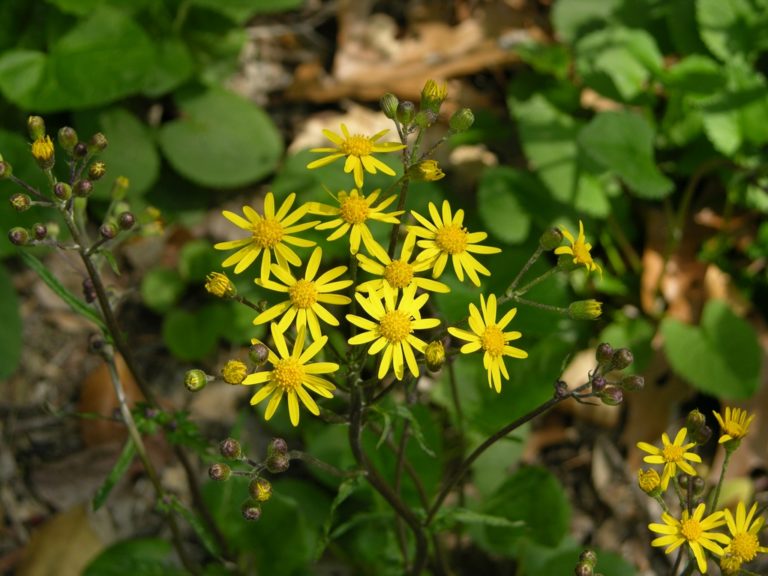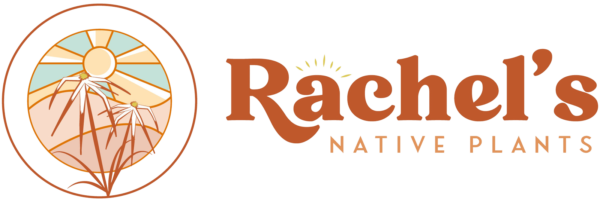Golden Ragwort is a very versatile flowering perennial member of the Asteraceae which we have found useful in various garden circumstances. It is native to the entire Eastern half of the U.S., and in North Carolina it is reported to occur in mountain and piedmont counties. While USDA says it occurs in “wet to mesic deciduous woodland openings” in our experience the “wet” is tolerated but is not necessary for healthy growth. This plant is rugged, providing a thick, evergreen groundcover and spring display of long lasting, 1½ – 2 foot, bright golden, upright flowers in full sun, in partial/sunny conditions, or even in bright shade. En mass, blooms can be striking These flowers attract a large number of butterflies and other pollinators and would be a good candidate for a pollinator garden, rain garden, or shady damp locations.
NURSERY HOURS
Wednesday: 10-4 Thursday: 10-6 Friday-Saturday: 10-4 Sunday: 12-4
Packera aurea

Key Info
Scientific Name: Packera aurea (L.) Á. Löve & D. Löve
Common Names: Golden Ragwort, Golden Groundsel, Butterweed or Squaw Weed, Life Root, Golden Senecio, Uncum, Uncum Root, Waw Weed, False Valerian, Cough Weed, Female Regulator, Cocash Weed, Ragweed, Staggerwort, and St. James wort.
Family Names: Asteraceae
Plant Type: Herbaceous perennial
Leaf Retention: Evergreen
Bloom Times: Apr
Flower Color: Yellow
Special Characteristics: Tolerates shade, Attracts bees, Groundcover, Attracts butterflies, Evergreen, Tolerates flooding
Additional Info
Habit: Upright flowering stalks arise from a thick basal rosette in spring. Basal offshoots extend horizontally and send up new plants, creating ground cover.
Height: 1' - 1.5'
Spread: 1' - 1.5'
Soil Conditions: Average to wet, soil with abundant organic matter to retain moisture, acid
Leaves: Basal leaves are glabrous, heart-shaped, and 2-3" long by 2" across with toothed margins and petioles as long as the blades. They are dark green, and often purplish underneath. Along the flowering stalk, there are usually 2-3 leaves in alternate arrangement. These leaves are smaller than the basal leaves and pinnately divided but not all the way to the midrib. When the flowering stalk has senesced, the basal leaves extend upward and the basal rosette disappears.
Flowers (or reproductive structures: The daisy-like flowers are ½–¾" across. Both the central disk florets and the ray florets are fertile, and both are golden yellow.
Fruit: Achene
Natural Distribution: Low woods, wet meadows, wet to mesic deciduous woodland openings and borders, moist savannas, banks of rivers and lakes, roadside embankments and abandoned fields.
USDA Hardiness Zone: 3 to 8
USDA Wetland Indicator Status in NC: FACW
Pollination: flowers attract bees & butterflies
Wildlife Connections: Attracts butterflies and songbirds.
Propagation: Division in spring or by seed.
